
Manta: Ecuador's Coastal Gem
Discover Manta, Ecuador: A coastal paradise with stunning beaches, fresh seafood, and rich cultural experiences. Perfect for relaxation and adventure alike.
Welcome to Manta, Ecuador's vibrant coastal city. Manta is known for its stunning beaches, fresh seafood, and bustling port. This city combines natural beauty with rich cultural experiences, making it a perfect destination for tourists. Manta's coastline is lined with beautiful beaches like El Murciélago and San Lorenzo. These sandy shores are perfect for sunbathing, swimming, and water sports. You can also take a stroll along the Malecón, Manta's picturesque boardwalk, where you'll find local shops, restaurants, and bars offering a taste of Ecuadorian hospitality. The city is also famous for its seafood. Manta's fishing industry ensures that the seafood here is as fresh as it gets. Don't miss trying the ceviche, a local favorite. Visit the fish market early in the morning to see the day's catch and perhaps buy some fresh fish to cook yourself. For a cultural experience, explore the Central Bank Museum, which showcases Ecuadorian art and history. Manta is also a gateway to the Machalilla National Park, home to diverse wildlife and archaeological sites. Take a boat trip to Isla de la Plata, often referred to as a mini-Galápagos, to see unique wildlife and enjoy snorkeling. Manta offers a blend of relaxation and adventure, making it a must-visit destination in Ecuador. Whether you're lounging on the beach, savoring local cuisine, or exploring cultural sites, Manta has something for everyone.
Local tips in Manta
- Visit the fish market early in the morning to see the freshest catch and experience local life.
- Take a boat trip to Isla de la Plata for a chance to see unique wildlife and enjoy snorkeling.
- Try the local ceviche, a seafood dish that's a favorite among both locals and tourists.
- Stroll along the Malecón in the evening for a relaxing experience with beautiful sunset views.
- Explore the Central Bank Museum to learn about Ecuadorian art and history.
Manta: Ecuador's Coastal Gem
Welcome to Manta, Ecuador's vibrant coastal city. Manta is known for its stunning beaches, fresh seafood, and bustling port. This city combines natural beauty with rich cultural experiences, making it a perfect destination for tourists. Manta's coastline is lined with beautiful beaches like El Murciélago and San Lorenzo. These sandy shores are perfect for sunbathing, swimming, and water sports. You can also take a stroll along the Malecón, Manta's picturesque boardwalk, where you'll find local shops, restaurants, and bars offering a taste of Ecuadorian hospitality. The city is also famous for its seafood. Manta's fishing industry ensures that the seafood here is as fresh as it gets. Don't miss trying the ceviche, a local favorite. Visit the fish market early in the morning to see the day's catch and perhaps buy some fresh fish to cook yourself. For a cultural experience, explore the Central Bank Museum, which showcases Ecuadorian art and history. Manta is also a gateway to the Machalilla National Park, home to diverse wildlife and archaeological sites. Take a boat trip to Isla de la Plata, often referred to as a mini-Galápagos, to see unique wildlife and enjoy snorkeling. Manta offers a blend of relaxation and adventure, making it a must-visit destination in Ecuador. Whether you're lounging on the beach, savoring local cuisine, or exploring cultural sites, Manta has something for everyone.
When is the best time to go to Manta?
Iconic landmarks you can’t miss
Malecon Escenico Murcielago
Explore the beauty of Malecon Escenico Murcielago in Manta, Ecuador, where ocean views, local art, and vibrant culture come together for an unforgettable experience.
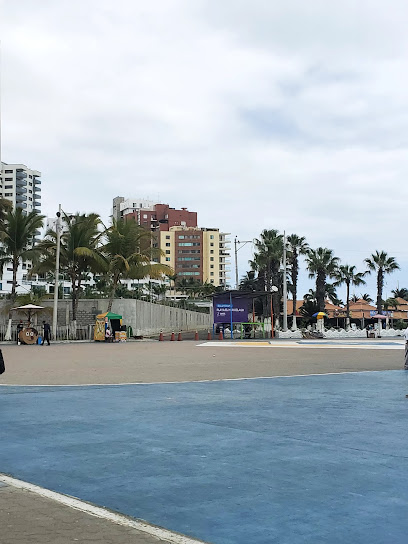
Playa Santa Marianita
Explore the serene Playa Santa Marianita in Ecuador, where stunning beaches, vibrant sunsets, and exciting water sports await every traveler.

Oro Verde Manta
Experience the luxury of Oro Verde Manta, a top-tier hotel offering breathtaking ocean views, exquisite dining, and unmatched service in the heart of Manta.
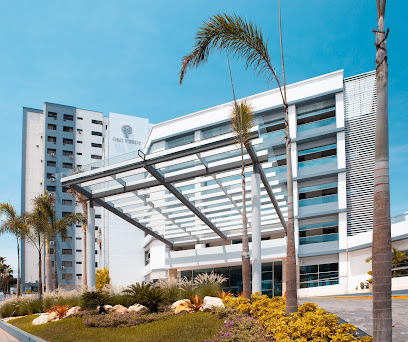
Plaza La Quadra
Explore Plaza La Quadra in Manta for a delightful shopping experience and a taste of local cuisine in Ecuador's vibrant coastal city.
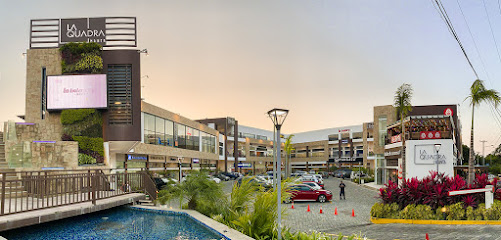
Balandra Hotel
Discover luxury and comfort at Balandra Hotel in Manta, Ecuador, where stunning beaches meet exquisite dining experiences.

Hotel Poseidon
Experience the luxury and beauty of Hotel Poseidon in Manta, Ecuador, where comfort meets stunning coastal views.
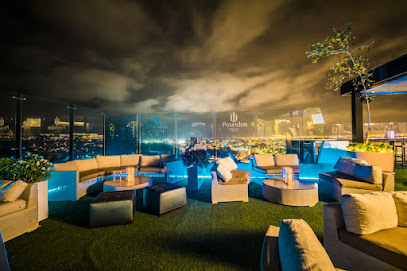
Cevichería 《Juventud Italiana》
Experience the vibrant flavors of Ecuador with fresh ceviche at Cevichería Juventud Italiana in the heart of Manta.
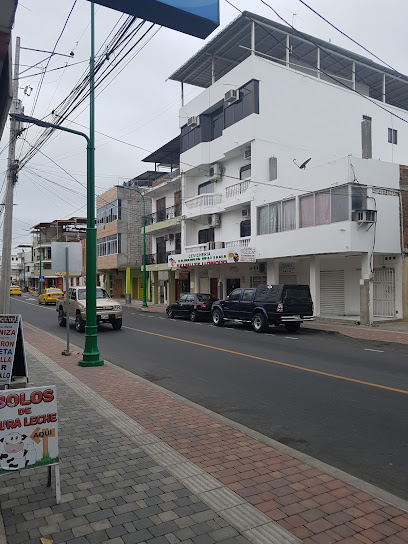
The Murcielago Manta beach
Experience the beauty of Murcielago Manta Beach, where golden sands meet vibrant culture along the stunning Pacific coast of Ecuador.

Hotel Vistalmar
Discover Hotel Vistalmar in Manta, Ecuador, where luxury meets coastal adventure, offering stunning views and the perfect base for your beach getaway.
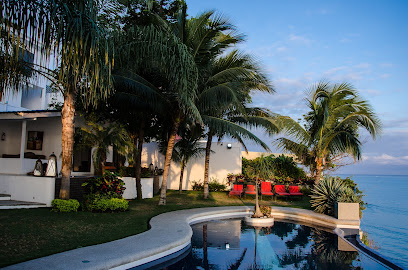
El Murcielago
Experience the vibrant atmosphere and natural beauty of El Murcielago Beach in Manta, Ecuador, where relaxation meets adventure by the Pacific Ocean.
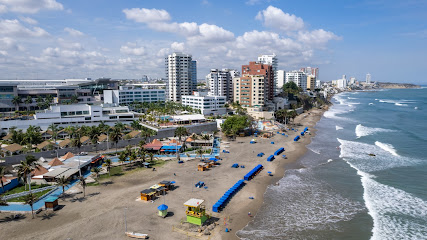
Puerto de Manta
Explore Puerto de Manta, Ecuador's vibrant port city, where stunning beaches, local culture, and fresh seafood await every traveler.

KOBE sushi & rolls - Mall del Pacífico
Indulge in the freshest sushi and innovative rolls at Kobe Sushi & Rolls, located in Manta's Mall del Pacífico, a culinary delight in Ecuador.
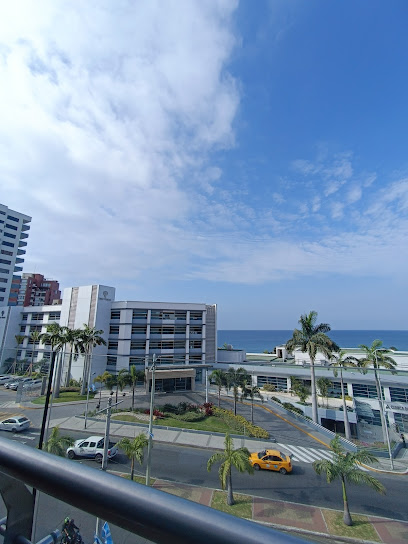
Hotel Oceanik
Discover the charms of Manta at Hotel Oceanik, where comfort meets breathtaking ocean views, perfect for a memorable coastal escape.

American Deli
Experience the best of American comfort food with a local twist at American Deli in Manta, where every meal is a delightful adventure.
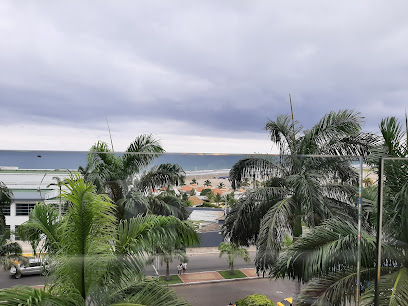
Botelos manta
Experience the vibrant flavors of Ecuador at Botelos Manta, where exceptional food meets a lively coastal atmosphere.

Unmissable attractions to see
Playa Santa Marianita
Discover the breathtaking beauty of Playa Santa Marianita, Ecuador's serene beach paradise known for water sports, stunning sunsets, and local flavors.
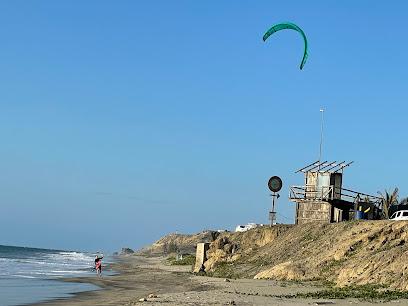
Civic Center Ciudad Alfaro
Experience the cultural heart of Montecristi at Civic Center Ciudad Alfaro, where art, history, and community intertwine.
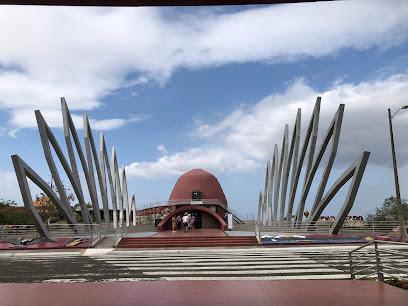
Refugio de Vida Silvestre y Marino Costera Pacoche
Experience the breathtaking biodiversity at Refugio de Vida Silvestre y Marino Costera Pacoche, an unforgettable nature preserve along Ecuador's stunning Ruta del Spondylus.
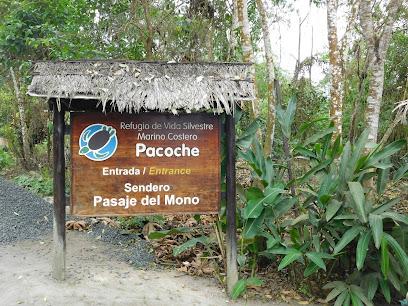
Playa Tarqui
Experience the vibrant charm of Playa Tarqui, Manta's stunning beach offering relaxation, local cuisine, and breathtaking sunsets on Ecuador's coast.
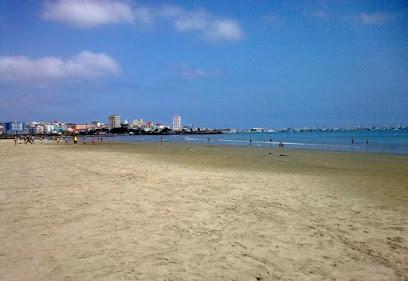
Centenario Park
Discover the serene beauty of Centenario Park in Manta, Ecuador, an urban oasis perfect for relaxation and cultural experiences.
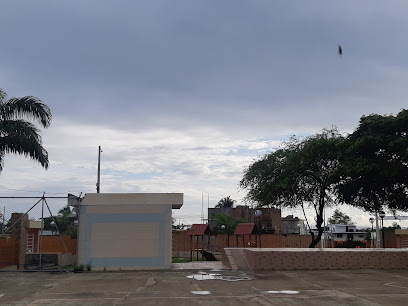
Museo Centro Cultural Manta
Explore the cultural tapestry of Manta at Museo Centro Cultural, where history, art, and tradition converge in an enriching experience.
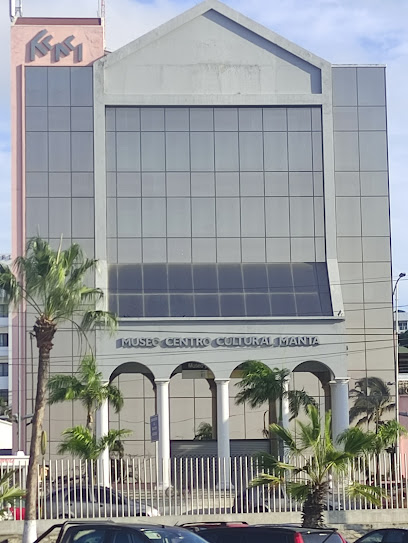
Cancebí Museum
Explore the vibrant cultural heritage of Ecuador at Cancebí Museum, a must-visit destination for history lovers in Manta.
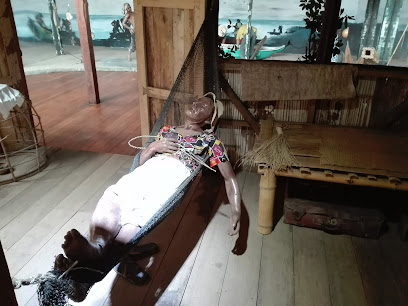
Tarqui
Experience the enchanting beauty and vibrant culture of Tarqui Beach in Manta, Ecuador, a perfect destination for relaxation and adventure.

MÁGICO ANCLADERO
Explore MÁGICO ANCLADERO, a stunning park in Manta, Ecuador, offering breathtaking coastal views and a serene escape into nature's beauty.

El Mirador Alto
Experience breathtaking views and serene beauty at El Mirador Alto, a must-visit attraction in Jaramijó, Ecuador.
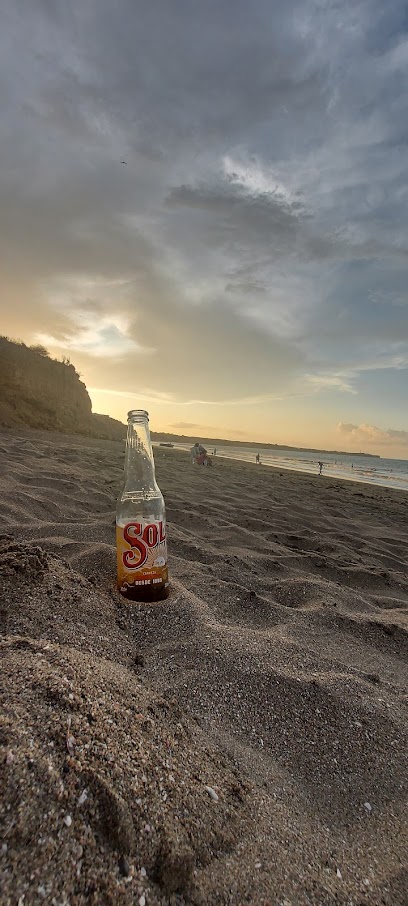
Essential places to dine
Martinica
Experience authentic Ecuadorian cuisine at Martinica in Manta - where fresh seafood meets vibrant flavors.
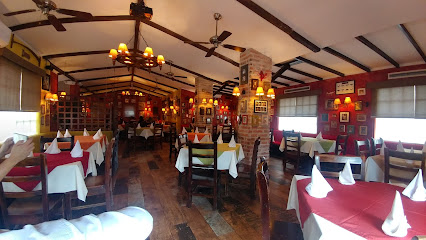
Casa Rosada Lounge Restaurant
Experience the vibrant flavors of Ecuador at Casa Rosada Lounge Restaurant in Manta – where every meal is a celebration of local cuisine.
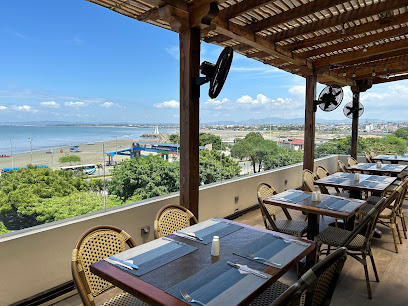
Caminito Parrilla Argentina
Experience the rich flavors and vibrant culture of Argentina at Caminito Parrilla in Manta - where every bite tells a story.
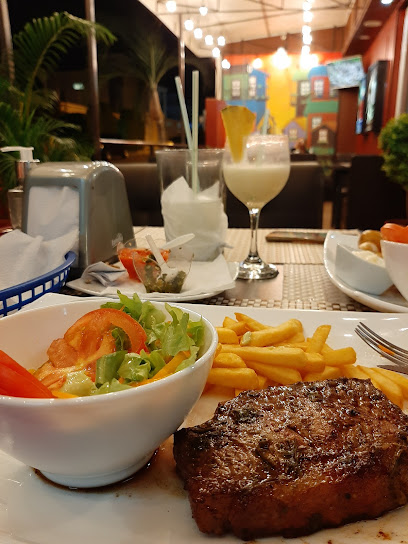
MegaFlipper - Flavio Reyes
Savor authentic Ecuadorian seafood at MegaFlipper - Flavio Reyes in Manta; where fresh flavors meet coastal charm.

Chamaco Restaurant
Experience vibrant flavors at Chamaco Restaurant in Manta - your gateway to authentic Mexican cuisine amidst Ecuador's coastal charm.
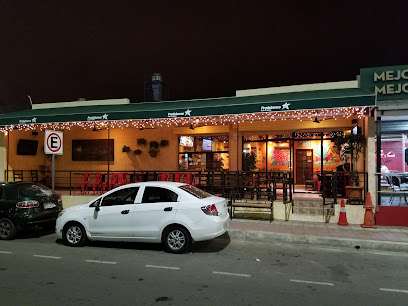
Restaurante Finisterre
Discover exquisite seafood and local flavors at Restaurante Finisterre in Manta - where every meal is a celebration of Ecuador's rich culinary heritage.
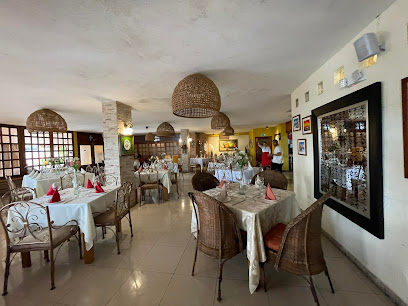
Krug Pub Manta
Experience the best of Manta's culinary scene at Krug Pub – where great food meets vibrant atmosphere in an unforgettable setting.
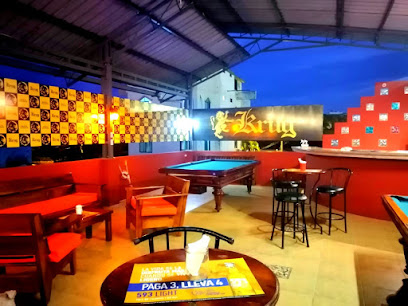
Iche Cocina Manabita
Experience authentic Manabita cuisine at Iche Cocina Manabita in Manta – a must-visit destination for food lovers exploring Ecuador.
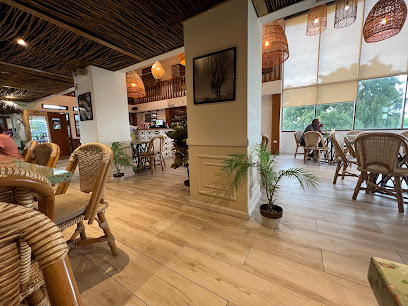
Restaurante Palmeiras
Experience authentic Ecuadorian cuisine at Restaurante Palmeiras in Manta - where every dish tells a story.
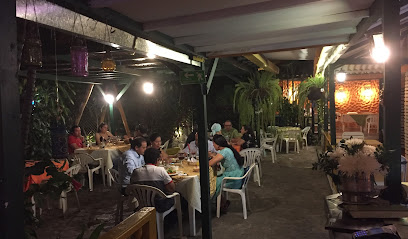
Restaurant Mamma Rosa
Discover authentic Ecuadorian cuisine at Restaurant Mamma Rosa in Manta—where every dish tells a story of flavor and tradition.
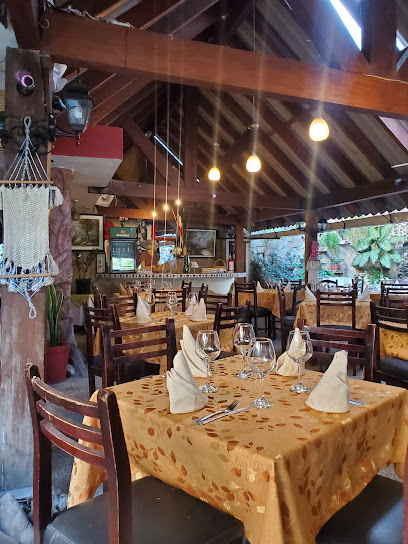
Humaliwo
Savor exceptional local and international flavors at Humaliwo - Manta's culinary delight perfect for every food lover.
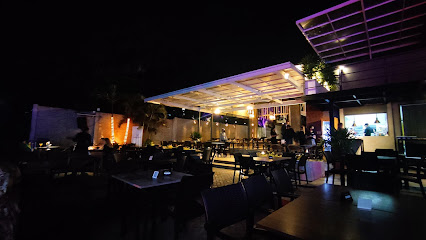
MAVI - Café & Grill
Discover culinary excellence at MAVI - Café & Grill in Manta; where fresh ingredients meet exquisite flavors for an unforgettable dining experience.
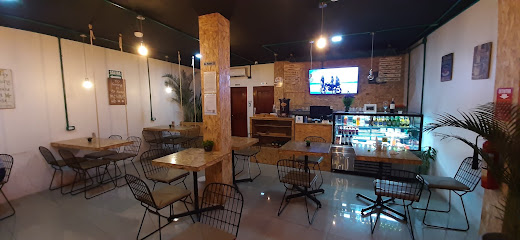
MUYA COCINA GOURMET
Experience authentic Ecuadorian flavors at MUYA COCINA GOURMET - a culinary gem in Manta offering innovative dishes with local ingredients.
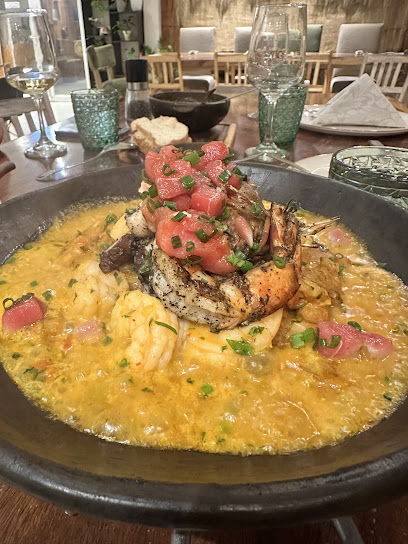
Capperi Ristorante & Bar
Experience authentic Italian cuisine at Capperi Ristorante & Bar in Manta – where every meal is a celebration of flavor and tradition.
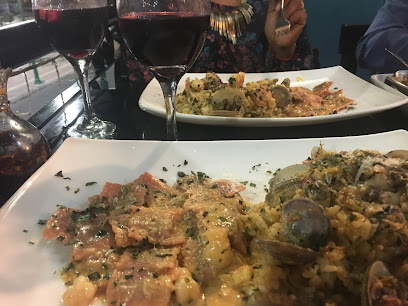
Pata salada
Discover Pata Salada in Manta: A culinary delight blending local seafood with international flavors in a welcoming atmosphere.
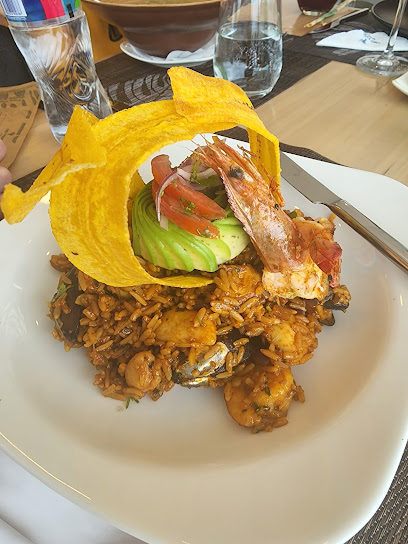
Markets, malls and hidden boutiques
Mall del Pacifico, Manta
Discover an incredible shopping experience at Mall del Pacifico in Manta, featuring diverse shops, dining, and entertainment options for all ages.
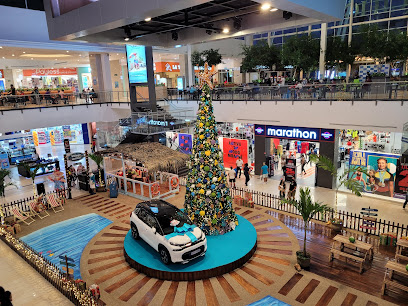
Paseo Shopping Manta
Discover the vibrant shopping scene and local culture at Paseo Shopping Manta, Ecuador's premier retail destination with diverse shops and dining options.

De Prati Manta
Discover style and variety at De Prati Manta, your top destination for shopping in Ecuador's coastal paradise.

Almacenes De Prati Manta
Discover the vibrant shopping experience at Almacenes De Prati Manta, where fashion meets quality in the heart of Ecuador's coastal paradise.

Almacén La Feria de Los Esteros
Explore Almacén La Feria de Los Esteros, Manta's premier clothing store for unique fashion and authentic Ecuadorian textiles.

Old Brain Ecuador
Explore Old Brain Ecuador for a unique blend of boutique fashion and motorcycle culture in Manta's vibrant shopping scene.

Boutique Johanna
Discover unique fashion treasures at Boutique Johanna in Manta, where local style meets international flair in a charming setting.
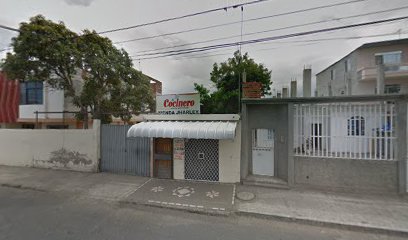
PatMar Boutique
Explore PatMar Boutique in Manta for unique Ecuadorian fashion that captures the local culture and style.
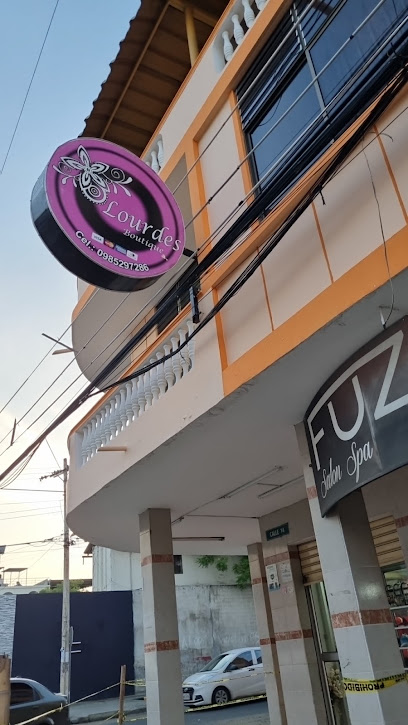
Boutique Naye
Explore Boutique Naye in Manta for the latest youth fashion trends, combining local flair with global styles in a vibrant shopping environment.

DMujeres Beauty Market (C.C. Paseo Shopping Manta)
Explore the vibrant DMujeres Beauty Market in Manta—your destination for top-quality beauty supplies and expert advice.
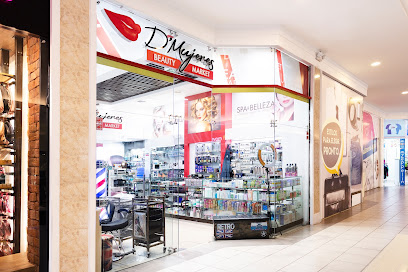
Aromas y Recuerdos
Experience the essence of Ecuador at Aromas y Recuerdos, a premier perfume store in Manta offering unique and captivating fragrances.

DETALLES Y CREACIONES MANTA
Explore Ecuadorian craftsmanship at Detalles y Creaciones Manta, your go-to gift shop for unique treasures and local artistry.

OPTIMODA
Explore the vibrant fashion scene at OPTIMODA, Manta's beloved clothing store offering trendy styles and unique local designs.
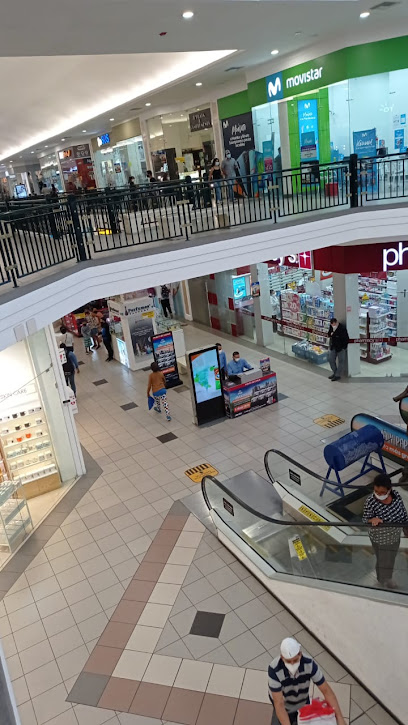
Time To Shop - boutique
Discover unique formal wear and stylish shoes at Manta's premier boutique, Time To Shop - Boutique. Elevate your wardrobe with personalized service.

CFASHION BOUTIQUE
Explore CFASHION BOUTIQUE in Manta for a stylish selection of local and trendy clothing that captures the essence of Ecuadorian fashion.

Essential bars & hidden hideouts
Casa Rosada Lounge Restaurant
Experience the authentic flavors of Ecuador at Casa Rosada Lounge Restaurant in Manta, where fresh ingredients meet coastal charm.
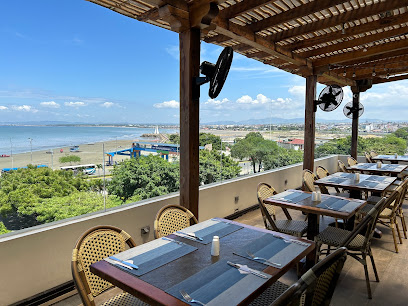
Iguana Bar Restaurante
Discover the vibrant Iguana Bar Restaurante in Manta, where tropical cocktails and delicious Ecuadorian cuisine await in a stunning coastal setting.
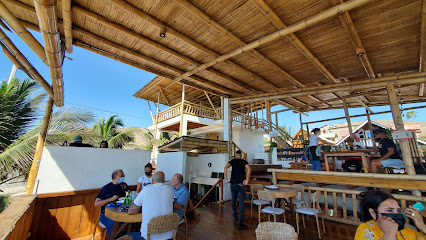
Plaza Del Sol Manta
Experience the vibrant nightlife at Plaza Del Sol Manta, where delicious drinks and a lively atmosphere await you in the heart of Manta.
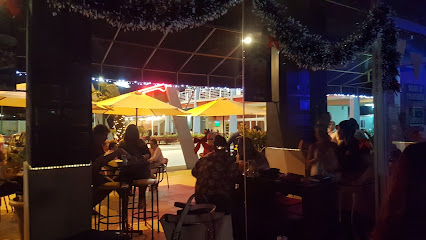
Krug Pub Manta
Experience the vibrant flavors of Manta at Krug Pub, your go-to spot for delicious food and refreshing drinks in a lively atmosphere.
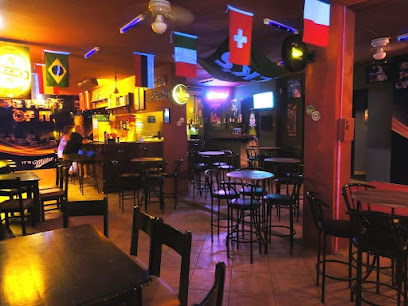
Taproom Latitud Cero Manta
Experience the best of Manta’s craft beer scene at Taproom Latitud Cero, where delicious brews and local cuisine come together.

SUASO BAR
Discover the lively Suaso Bar in Manta, where local culture meets refreshing drinks and a vibrant nightlife experience.
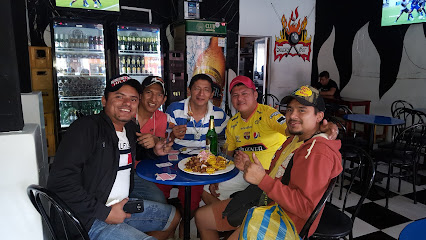
wave shot | BAR | RESTAURANT | MANTA | TURISMO | ECUADOR |
Discover the vibrant flavors of Manta at Wave Shot Bar, a gastropub offering a unique culinary experience by the coast.

The Magic Bar
Discover the vibrant atmosphere of The Magic Bar in Manta, where exceptional cocktails and lively entertainment create unforgettable experiences.
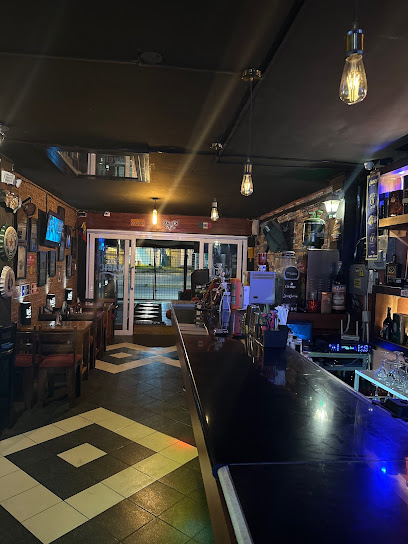
BarBudo
Experience the vibrant nightlife of Manta at BarBudo, where cocktails, music, and fun come together for an unforgettable evening.
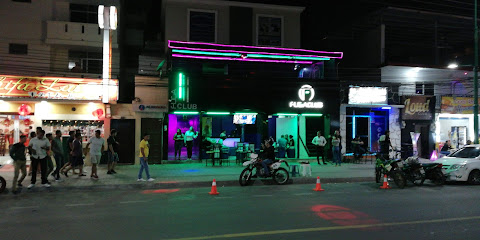
Paradiso Bar Karaoke Discoteca Lounge
Discover the best of Manta's nightlife at Paradiso Bar Karaoke Discoteca Lounge, where karaoke, dancing, and great drinks create unforgettable experiences.

KALUMA CLUB
Discover the enchanting ambiance of Kaluma Club, Manta's premier piano bar where live music meets vibrant nightlife.
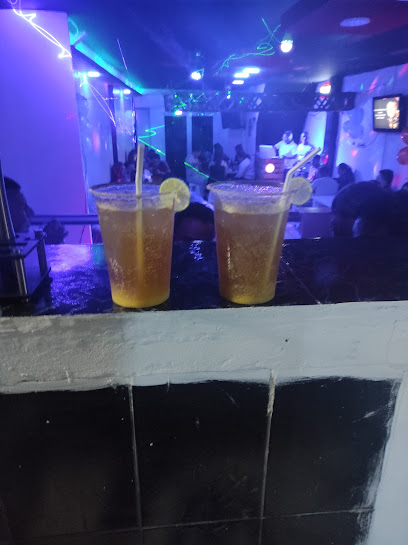
Zulu Resto Bar
Discover the electrifying nightlife of Manta at Zulu Resto Bar, where vibrant music and delicious cocktails await.
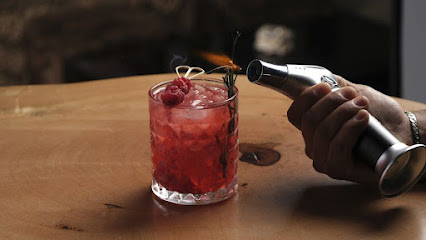
ON THE ROCKS
Experience Manta's nightlife at On the Rocks, a vibrant bar serving unique cocktails and local brews in a lively setting.
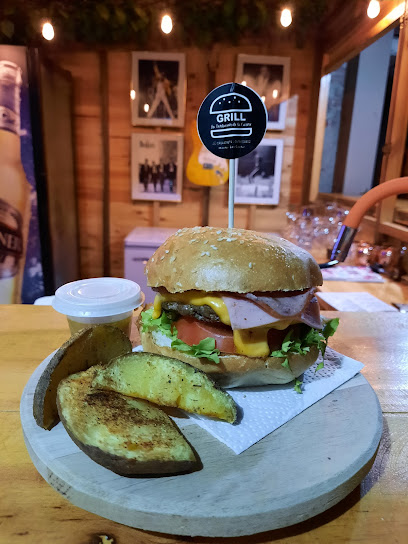
BAR KARAOKE GARAGE
Discover the vibrant nightlife at Bar Karaoke Garage in Manta, where music, laughter, and unforgettable moments come together in an electrifying atmosphere.

D´JAVU LOUNGE & BAR
Unwind and enjoy the vibrant nightlife at D´JAVU LOUNGE & BAR in Manta, where delicious cocktails and lively ambiance await.
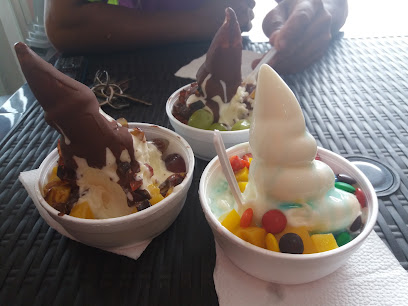
Local Phrases
-
- HelloHola
[oh-lah] - GoodbyeAdiós
[ah-dyohs] - YesSí
[see] - NoNo
[noh] - Please/You're welcomePor favor/De nada
[por fah-vor/deh nah-dah] - Thank youGracias
[grah-syahs] - Excuse me/SorryDisculpe/Perdón
[dees-kool-peh/pehr-dohn] - How are you?¿Cómo estás?
[koh-moh ehs-tahs] - Fine. And you?Bien. ¿Y tú?
[byen. ee too] - Do you speak English?¿Hablas inglés?
[ah-blahs een-glays] - I don't understandNo entiendo
[noh ehn-tyen-doh]
- HelloHola
-
- I'd like to see the menu, pleaseMe gustaría ver el menú, por favor
[meh goos-tah-ree-ah behr ehl meh-noo, por fah-vor] - I don't eat meatNo como carne
[noh koh-moh kahr-neh] - Cheers!¡Salud!
[sah-lood] - I would like to pay, pleaseMe gustaría pagar, por favor
[meh goos-tah-ree-ah pah-gahr, por fah-vor]
- I'd like to see the menu, pleaseMe gustaría ver el menú, por favor
-
- Help!¡Ayuda!
[ah-yoo-dah] - Go away!¡Vete!
[veh-teh] - Call the Police!¡Llama a la policía!
[yah-mah ah lah poh-lee-see-ah] - Call a doctor!¡Llama a un doctor!
[yah-mah ah oon dohk-tohr] - I'm lostEstoy perdido
[ehs-toy pehr-dee-doh] - I'm illEstoy enfermo
[ehs-toy ehn-fehr-moh]
- Help!¡Ayuda!
-
- I'd like to buy...Me gustaría comprar...
[meh goos-tah-ree-ah kohm-prahr] - I'm just lookingSolo estoy mirando
[soh-loh ehs-toy meer-ahn-doh] - How much is it?¿Cuánto cuesta?
[kwan-toh kwehs-tah] - That's too expensiveEso es muy caro
[eh-soh ehs mwee kahr-oh] - Can you lower the price?¿Puedes bajar el precio?
[pweh-dehs bah-hahr ehl pree-syoh]
- I'd like to buy...Me gustaría comprar...
-
- What time is it?¿Qué hora es?
[keh oh-rah ehs] - It's one o'clockEs la una en punto
[ehs lah oo-nah ehn poon-toh] - Half past (10)Las diez y media
[lahs dyehs ee meh-dee-ah] - MorningMañana
[mah-nyah-nah] - AfternoonTarde
[tahr-deh] - EveningNoche
[noh-cheh] - YesterdayAyer
[ah-yehr] - TodayHoy
[oy] - TomorrowMañana
[mah-nyah-nah] - 1Uno
[oo-noh] - 2Dos
[dohs] - 3Tres
[trehs] - 4Cuatro
[kwah-troh] - 5Cinco
[seen-koh] - 6Seis
[seys] - 7Siete
[syeh-teh] - 8Ocho
[oh-choh] - 9Nueve
[nweh-veh] - 10Diez
[dyehs]
- What time is it?¿Qué hora es?
-
- Where's a/the...?¿Dónde está...?
[dohn-deh ehs-tah] - What's the address?¿Cuál es la dirección?
[kwal ehs lah dee-rehk-syohn] - Can you show me (on the map)?¿Puedes mostrarme (en el mapa)?
[pweh-dehs mohs-trar-meh (ehn ehl mah-pah)] - When's the next (bus)?¿Cuándo es el próximo (autobús)?
[kwan-doh ehs ehl proh-ksee-moh (ow-toh-boo-ss)] - A ticket (to ....)Un boleto (para ....)
[oon boh-leh-toh (pah-rah)]
- Where's a/the...?¿Dónde está...?
History of Manta
-
The region around modern-day Manta was inhabited by indigenous groups long before the arrival of the Spanish. The Manteños, a pre-Columbian culture, were the dominant group in this area. They were known for their advanced maritime skills, extensive trade networks, and unique pottery. The Manteños utilized large rafts to trade goods such as Spondylus shells, which were highly valued in Andean cultures.
-
In the early 16th century, Spanish conquistadors arrived on the shores of what is now Manta. The Spanish quickly recognized the strategic importance of the location for maritime activities. The town of San Pablo de Manta was established in 1535 as a coastal outpost to support Spanish navigation and exploration along the Pacific coast.
-
During the 17th and 18th centuries, Manta faced numerous attacks from pirates and privateers who roamed the Pacific Ocean. These attacks led to the construction of defensive structures and a heightened sense of vigilance among residents. Notable incursions included raids by English and Dutch pirates seeking to plunder the wealth of the Spanish Empire.
-
Manta played a role in Ecuador's struggle for independence from Spanish colonial rule. In the early 19th century, the town became a site of revolutionary activity as local leaders and residents joined the broader South American independence movement. By 1822, Ecuador had achieved independence from Spain, and Manta began to develop as a free town within the new nation.
-
During the 20th century, Manta emerged as a vital economic hub due to its strategic location and natural harbor. The city developed a robust fishing industry and became known as a major exporter of tuna and other seafood. Additionally, the construction of the Port of Manta facilitated international trade, further boosting the local economy.
-
Manta is rich in cultural heritage, reflecting a blend of indigenous, Spanish, and modern influences. The city celebrates numerous festivals and events that showcase its unique traditions. One of the most prominent cultural events is the annual Festival of the Sea, which honors the city's maritime heritage with parades, music, and dance. Additionally, Manta is known for its vibrant arts scene, including traditional crafts such as weaving and pottery.
-
In recent decades, Manta has continued to grow and modernize, becoming one of Ecuador's key cities. The construction of modern infrastructure, including an international airport and improved road networks, has enhanced connectivity and tourism. Manta's beautiful beaches, lively markets, and historical sites attract visitors from around the world, making it a dynamic destination that bridges the past and present.
Manta Essentials
-
Manta is accessible via Eloy Alfaro International Airport, which is located just a few kilometers from the city center. Direct flights to Manta are available from Quito and Guayaquil. Alternatively, you can travel by bus from major cities like Quito, Guayaquil, and Cuenca. The bus journey from Quito takes approximately 8-10 hours, while from Guayaquil it takes around 4-5 hours.
-
Local transportation in Manta includes buses, taxis, and mototaxis (three-wheeled vehicles). The bus network is extensive and affordable, covering most areas of the city. Taxis are readily available and relatively inexpensive, but it's advisable to agree on a fare before starting your journey. For a more local experience, mototaxis can be a fun way to get around short distances.
-
The official currency in Ecuador is the United States Dollar (USD). Credit cards are widely accepted in hotels, restaurants, and larger stores, but it is advisable to carry cash for smaller establishments and local markets. ATMs are available throughout Manta for cash withdrawals.
-
Manta is generally safe for tourists, but like any city, it is important to stay vigilant. Avoid walking alone at night in less crowded areas and keep an eye on your belongings in busy places like markets and bus terminals. Some neighborhoods such as Tarqui and parts of Los Esteros have higher crime rates, so it is best to exercise caution when visiting these areas.
-
In case of an emergency, dial 911 for immediate assistance. The local police station and medical facilities are available in Manta. It is recommended to have travel insurance that covers medical emergencies. For minor health issues, there are numerous pharmacies throughout the city where you can purchase over-the-counter medications.
-
Fashion: Do dress comfortably and casually, but avoid overly revealing clothing when outside of beach areas. Religion: Do respect local customs, especially when visiting churches. Public Transport: Do be mindful of your belongings on public transport. Don't eat or drink on buses. Greetings: Do greet people with a handshake. A friendly 'Hola' goes a long way. Eating & Drinking: Do try local seafood delicacies. Don't refuse hospitality, as it is considered impolite.
-
To experience Manta like a local, visit the fish market early in the morning to see the day's fresh catch and enjoy a traditional 'ceviche' breakfast. Spend an afternoon at Murciélago Beach, a favorite among locals. Engage with locals, as they are often friendly and willing to share stories about Manta’s history and culture. For a unique experience, take a boat tour to Isla de la Plata, often referred to as the 'Poor Man's Galapagos.'
Trending Landmark in Manta
Nearby Cities to Manta
-
Things To Do in Salinas
-
Things To Do in Guayaquil
-
Things To Do in Ambato
-
Things To Do in Mindo
-
Things To Do in Quito
-
Things To Do in Cuenca
-
Things To Do in Otavalo
-
Things To Do in Ibarra
-
Things To Do in Tena
-
Things To Do in Macas
-
Things To Do in Loja
-
Things To Do in Pasto
-
Things To Do in Piura
-
Things To Do in Popayán
-
Things To Do in Chiclayo








